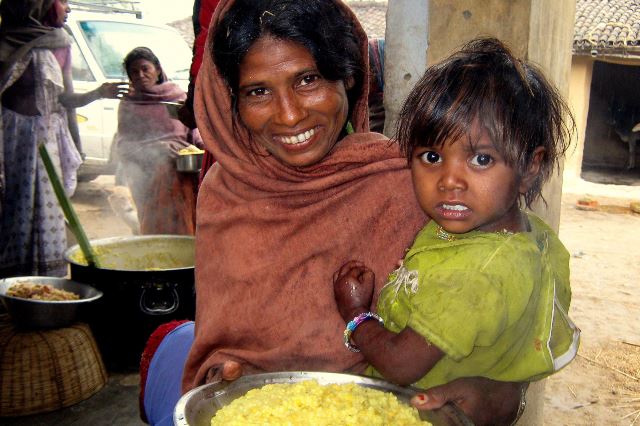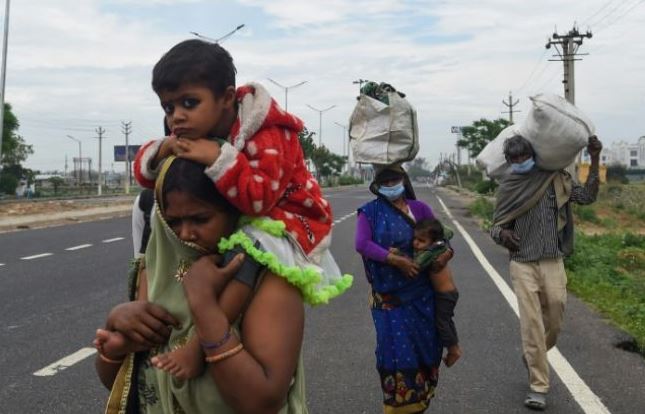‘Hungry India Prays for Rain’, a headline in The Times, London, deeply embarrassed me during my first trip out in the 197Os. The reality was not unknown. But it hit hard as it needed explaining to foreign friends who would wonder: India won a war in 1971, but how come its people remain hungry?
Half-a-century hence, India still prays for rain. Dependent on the monsoon cycle, it swings between droughts and floods, at times visited by both in some regions. Home to rivers, big and small, but divided into adversarial states, India has failed to share available water resources.
But India is no longer ‘hungry’. Two ‘revolutions’, ‘Green’ (food and farm), and ‘White’ (milk) have made all the difference. No reports of starvation death have come for many years. ‘Extreme’ poverty, it is now claimed, has reduced to less than one percent.
India is better-off in a world where over 735 million people live in extreme poverty, on less than $1.90 a day. But, extreme poverty isn’t just about economic hardship and lack of opportunity. It also leads to malnutrition, chronic illness, disease, violence and abuse. India’s record is mixed.
In the 2021 Global Hunger Index, India ranks 101st out of the 116 countries with sufficient data to calculate 2021 GHI scores. With a score of 27.5, India has a level of hunger that is still serious.
Poverty persists, no matter how high India flies with its burgeoning list of billionaires, its economy growing, its trade scaling top positions of many items, including in food et al.
From a country that imported and even received free food (remember the American PL 480?), India’s food grain exports are impressive enough to make it a food-giver to the world. Wheat exports alone have risen from 200,000 tons to hit record 7.85 million tonnes in 2021-22. There is food security, even though the consumer does not always benefit as several factors determine retail prices.
No longer left to “God’s will” poverty remains a sensitive issue. India grappled with it even when colonized. Dadabhai Naoroji damned the British rule in his scathing book Poverty and Un-British Rule in India, something Shashi Tharoor does today, embarrassing Britons – only slightly, if at all. Naoroji, who died in 1917, would have damned the British again had he witnessed the Great Bengal Famine of the 1940s, caused by just one man – Winston Churchill.
India could then blame the British, but felt responsible post-Independence to have what is called the “Great Indian Poverty Debate.” It remained a hotly contested topic in the statistical as well as the political realm. Garibi Hatao was the slogan on which Indira Gandhi won her parliamentary election in 1971.
The debate accelerated through the 1990s, post-liberalisation. The claim that India’s extreme poverty reduced from 36 per cent to 26 per cent of the population thanks to the economic reforms generated several academic studies.
In 2009, economist Suresh Tendulkar’s report furthered the debate by including expenses on healthcare and education as part of poverty determination. This report set ₹4,824 and ₹3,904 as the urban and rural monthly income levels for a family of five as the poverty baseline. It triggered one of the earliest loud discussions in the then-nascent Indian social media.
Narrating the evocative debate’s time-line, economist-diplomat Aashish Chandorkar quotes late journalist Anil Padmanabhan who wrote in the Mint newspaper in 2013 – “The business of fixing poverty runs into billions of dollars and there is obviously a lot at stake if poverty is no longer the country’s primary social and developmental challenge.”
The “great Indian debate” has been revived this month. Two different estimates of poverty and inequality were published by authors affiliated to the International Monetary Fund (IMF) and the World Bank (WB). The IMF one, co-authored by its Executive Director for India, Surjeet Bhalla, with Karan Bhasin and Arvind Virmani, places the population still suffering extreme poverty at 0.8 percent, while the one for WB says it is 1.4 percent.
The World Bank paper’s title is self-explanatory. “Poverty in India has declined over the last decade but not as much as previously thought,” Sutirtha Sinha Roy and Roy van der Weide argue in their paper. While the levels may vary, the conclusions on the trend in poverty reduction, although reached through the use of varying data and methodology, are not very different.
Both conclude that poverty reduction has slowed down in the last seven years of the present NDA government compared to the 10-year period of 2004-2014 of the UPA. While Bhalla reports 26 million people moving out of poverty every year during the UPA regime, this number is one third at 8.6 million for the NDA government. In terms of percentage point per annum (PPA) reduction in poverty, it is 2.5 PPA for the UPA declining to one fourth at 0.7 PPA for the current NDA.
ALSO READ: Fight Against Poverty And Populism
Both are being hotly contested on several counts. Most controversial, perhaps, is in IMF study that concludes that India eradicated extreme poverty even before the 2020-21 Corona-19 pandemic.
Those who disagree, argue that the economic growth had declined well before the pandemic, from 8 percent in 2016-17 to 3.6 percent in 2019-20. Unemployment had increased. Ten million people turned jobless migrants. Real wage growth declined. How could the poverty have declined at the bottom?
While the broad conclusion of a sharp slowdown in poverty reduction during the present NDA government compared to the UPA period may be valid, there are differences in the level and extent of poverty reduction claimed, with some studies actually showing a rise in poverty. The real issue is not just what happened to poverty and inequality but also what factors contributed to poverty reduction.
There appears to be a consensus that many of the initiatives during the UPA era, including the Mahatma Gandhi National Rural Employment Guarantee (MNREG) programme and the Food Security Act have contributed to improvement in the lives of the poor, pulling them out of poverty pit. Bhalla also agrees and documents the stellar role of the in-kind transfers through the subsidised food scheme under the Public Distribution System (PDS).
The expansion of the PDS during the pandemic certainly contributed to reducing the misery of the poor who suffered through a sharp slowdown of the economy and the subsequent disruption in economic activity during the pandemic. This calls for strengthening the social safety nets and expenditure on food and livelihood schemes given the challenge of economic recovery coupled with rising inflation.
The IMF study assumes that the ‘in-kind’ food grain transfers to the poor can be tabulated in monetary terms since those who have food in surplus can barter it or sell it. Is this really possible when economic conditions are adverse for a rural beneficiary?
Finally, one is tempted to make a political comment. Much of the poverty alleviation is attributed to the Pradhan Mantri Garib Kalyan Anna Yojana (PMGKAY), which is currently in its fourth edition. Welcoming that with a hearty applause, one is tempted to recall rejection by the present rulers of past poverty alleviation welfare measures, named after one set of leaders, as ‘doles’ that denied the recipient ‘dignity’. Does the change of label now ‘dignify’ a ‘dole’?
The writer can be reached at mahendraved07@gmail.com

